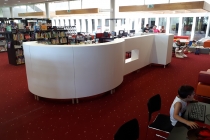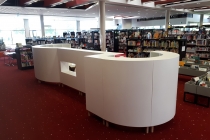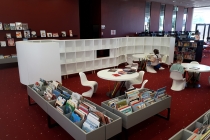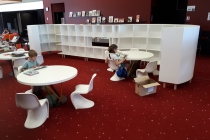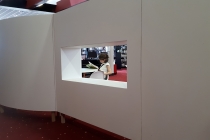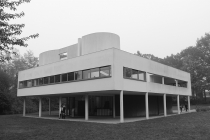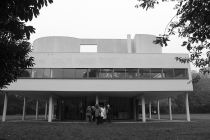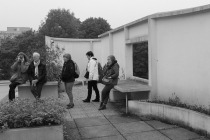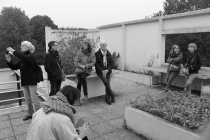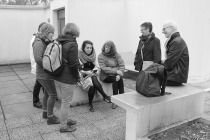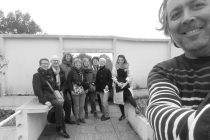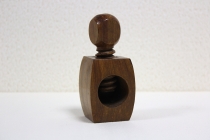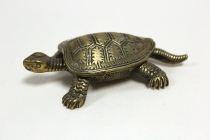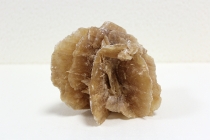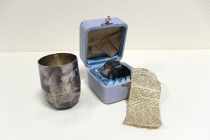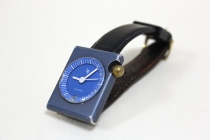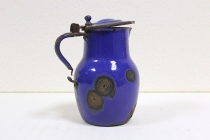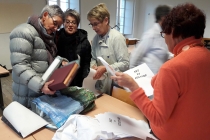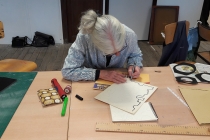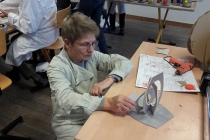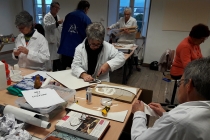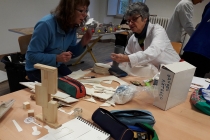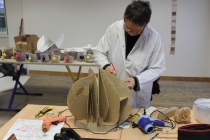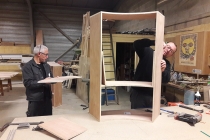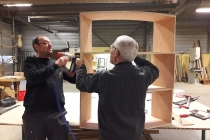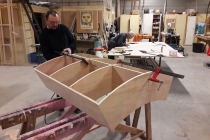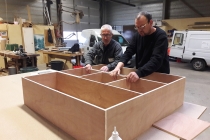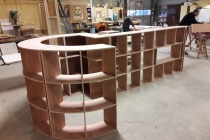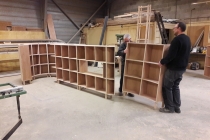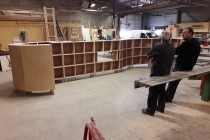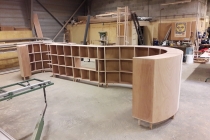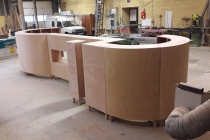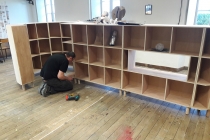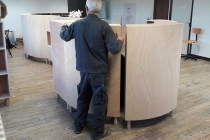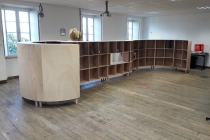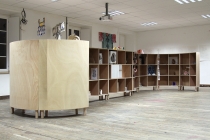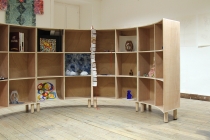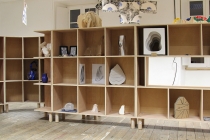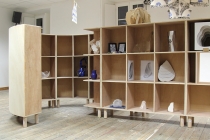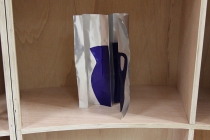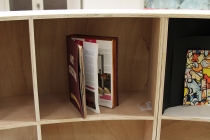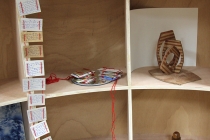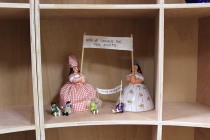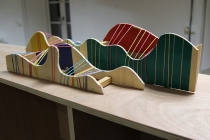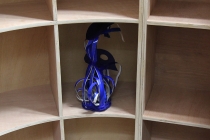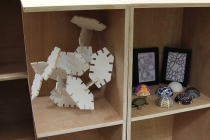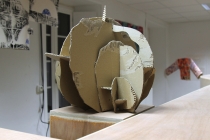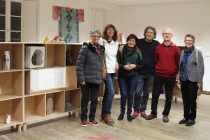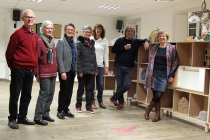Sculpture, 2017.
Painted plywood.
142 cm x 656 cm x 225 cm.
Production La Kiosque, Mayenne.
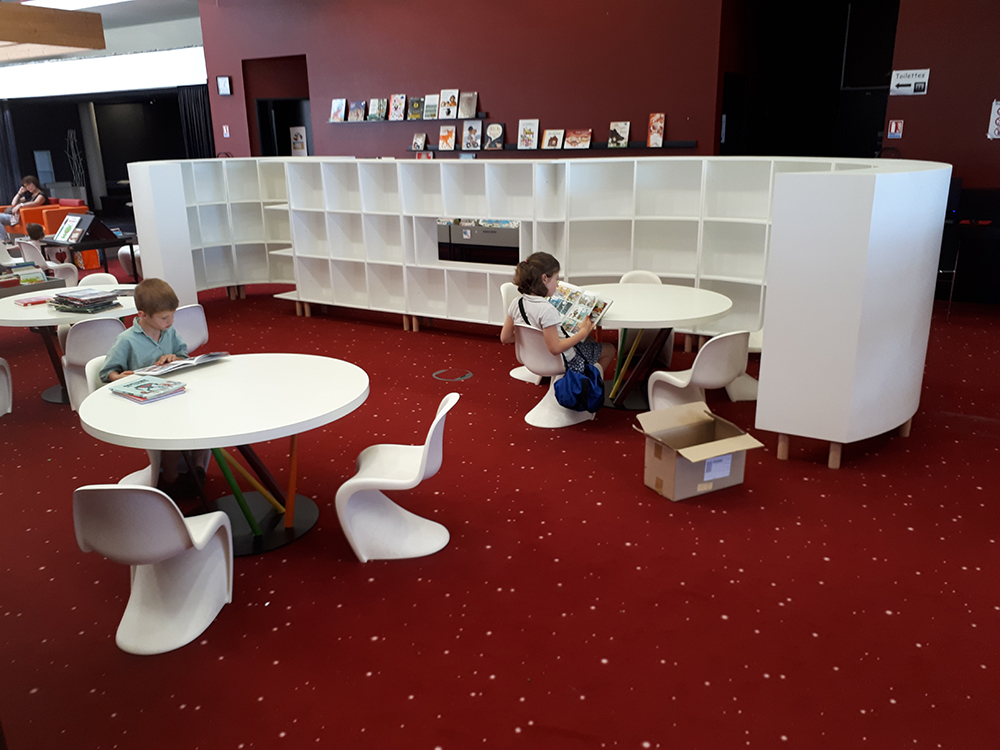
In 2017, Mathias Courtet invited me as artist-in-residence at the small art school in the town of Mayenne. The residency began with a visit to Le Corbusier’s architectural masterpiece, the Villa Savoye. For a long time, I had been interested in the strange curved forms that protrude from the terraced roof. Inside the majority of buildings designed by Le Corbusier, whether detached houses or collective social habitation, one is confronted by an arrangement of rectangular spaces. This is almost certainly an architectural response necessary to address the juxtaposition of different rooms and the maximisation of space in general. On the roof we can see an altogether different vocabulary, richer in form, often curved, sometimes irregular. Here the different shapes touch nothing but the sky. These forms, situated at the limit of the building, seem to me to be the concrete realization of freedom, and as such, Le Corbusier’s « Solarium » has become one of the iconic forms of the 20th century.
Back at the school in Mayenne, we talked about Le Corbusier and on the internet, I found an old radio programme that had been recorded in the 1960s. ’Tonight, burglary at Le Corbusier’s home!’ Of course it’s not a real break-in. Max Favelli and his camarades turn up at Le Corbusier’s place and only pretend to steal certain objects. In order to get them back, Le Corbusier has to tell some tales, anecdotes about their provenance. One discovers the importance of nature in the modernist project as Max Favelli asks Le Corbusier to explain why he possesses such a large collection of ornamental objects. Le Corbusier replies:
« First of all I would like to rectify Mr Favelli’s assumption that these are decorative objects, ornaments in my home. What nonsense! They occupy my home. Above all, they occupy my mind. These are common objects. One can find them anywhere, in daily life or while taking a walk in the open air. The trick is to see them, to observe them, to get to know them, to admire them, because in general, the contain all of nature’s laws. »
https://www.franceculture.fr/emissions/la-nuit-revee-de/ce-soir-cambriole-le-corbusier/
I asked my group if they had any objects at home that for them were more than just decorative, objects that had become almost ‘friends’, indispensable travelling companions that have survived multiple displacements, from home to home, and that will no doubt accompany them until the end of their days. The participants were invited to bring their objects to the school. Through drawing, we studied them. We tried to understand them. Through research each participant came to propose new forms and make a new ‘thing’ inspired by the spirit of their original object of fascination.
At the same time, I also began to reflect on certain forms that one can find in nature and their metaphorical relations to our existence. I imagined myself walking along a beach in the winter, the wind pushing at my back. On seeing a rather beautiful sea shell, white and conical, I bent down to pick it up. Beautiful for sure, but also empty. The creature that once lived in this micro-architecture had log since departed. Death and emptiness. Void. These days, life was elsewhere. And then I thought about the hermit crab, and how life can come back. Later on I thought about Le Corbusier’s solarium, the sea shell of Poissy, and how the family and friends of Mr & Mme Savoye could sit down, sheltered from the wind, and warm themselves in the winter sun.
In Mayenne, with help from the municipal craftsmen, I built a shelving system inspired by the solarium of the Villa Savoye and I invited my group to invest each alveoli with their own creations.
Also see:
Solarium Vitré
Links:
https://www.kiosque-mayenne.org
http://www.villa-savoye.fr

